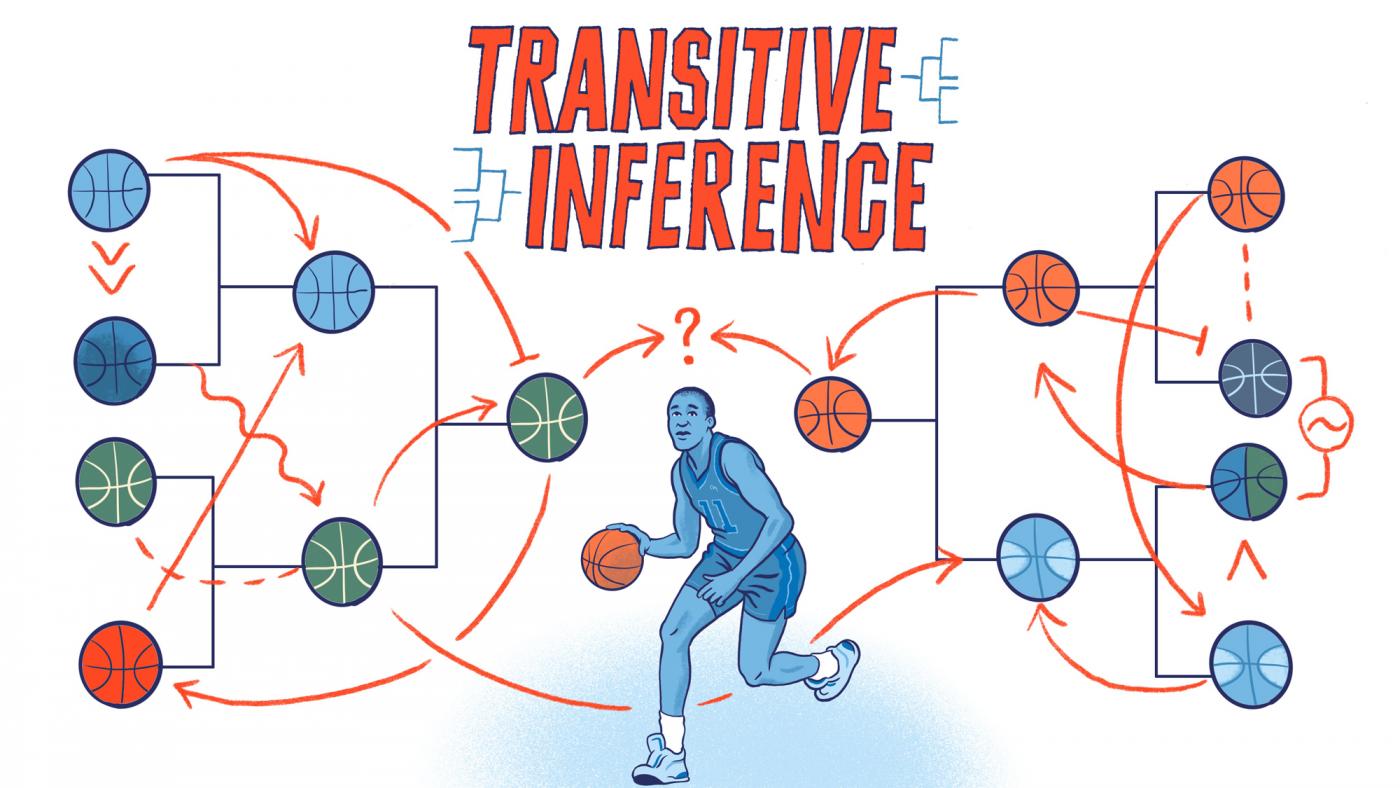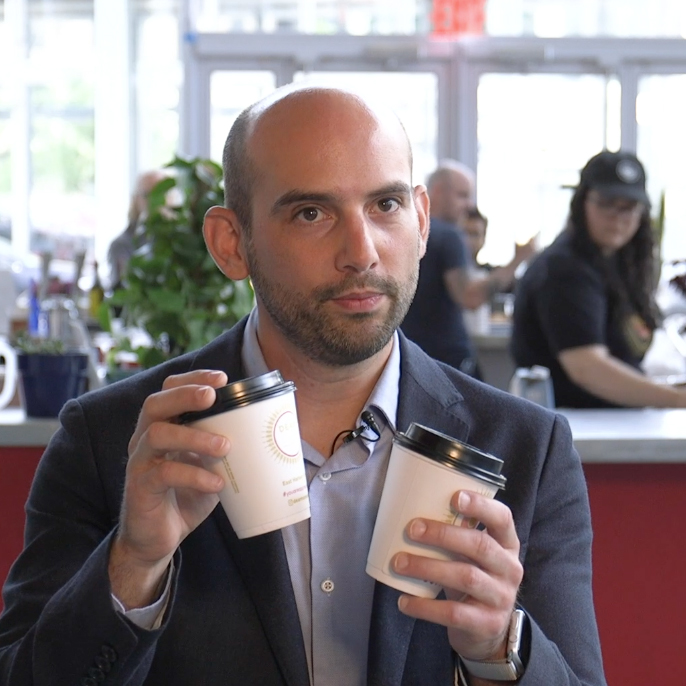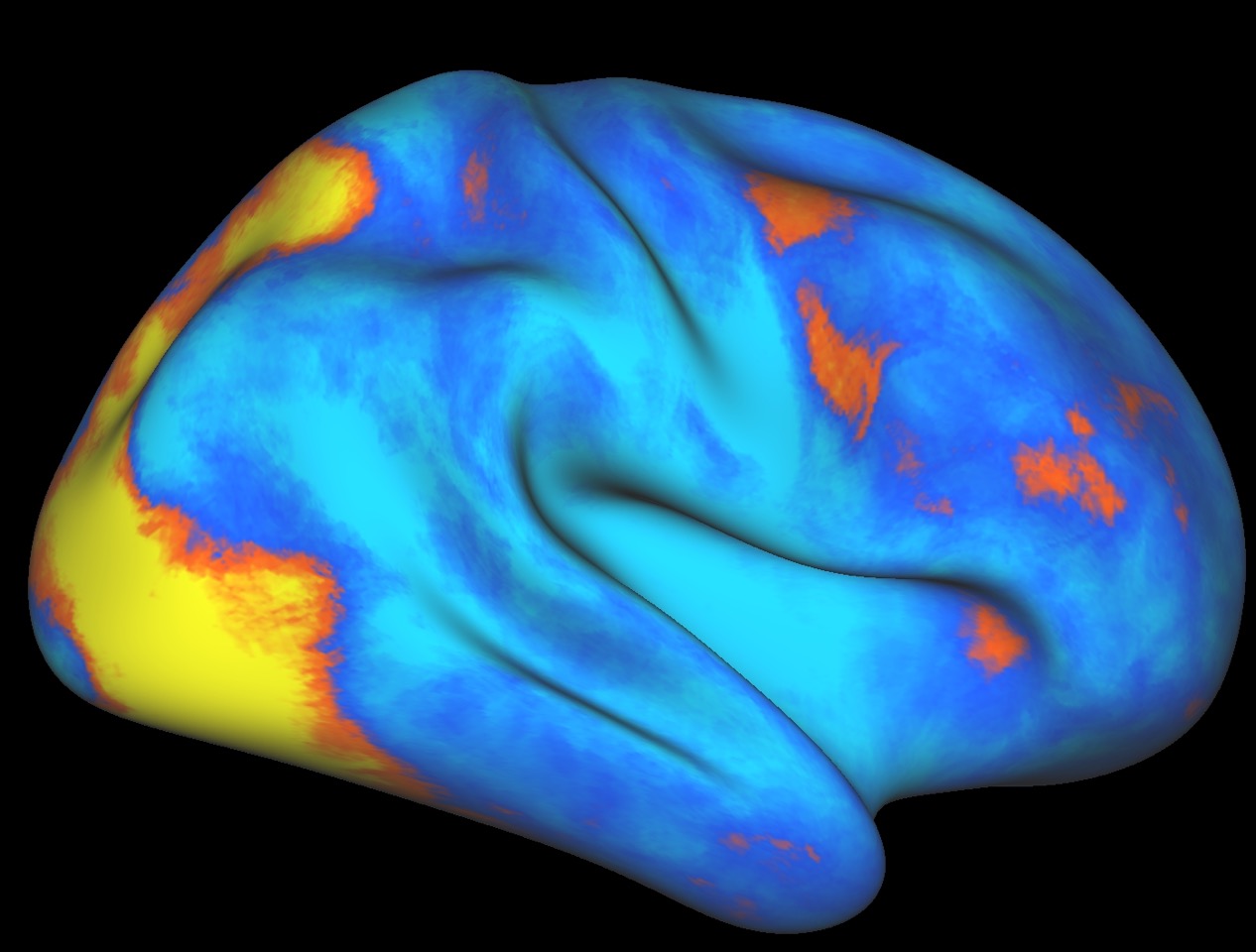Of all the decisions we make every day, some seem unique to the human experience, such as picking which football team to root for or choosing an ice cream flavor at the store. Many of the calculations our brains perform when making these decisions use a special kind of logic, one that scientists once thought required a capacity to speak and understand language.
But studies have shown that many species also seem to use this kind of logic, called transitive inference, when making decisions. In a pair of recent studies, Columbia scientists have shed light on this process. These findings provide critical insight not only into the evolutionary origins of complex thinking, but can also provide clues to the underlying mechanisms behind neurological and psychiatric disorders in which this type of thinking is impaired, such as autism and schizophrenia. We spoke with the papers’ authors — Herbert Terrace, PhD, Vincent Ferrera, PhD, and Greg Jensen, PhD — about this work, and what it reveals about the complex abilities of the brain, both in health and in disease.
How does the brain make decisions?
Herbert Terrace: Every decision the brain makes can be boiled down to computations that draw on experiences and memories. In my research, I have long been curious about the mechanisms of memory, and how the brain learns and uses information to make decisions.
Vincent Ferrera: The brains of different species appear able to build mental structures from which to draw upon when making decisions. This innate capacity comes with huge advantages for an animal, helping it to learn and, fundamentally, to survive. One possible mechanism that has gotten a lot of attention recently is a type of deductive reasoning called transitive inference.
Transitive inference is the form of reasoning we use when comparing two objects we have never directly compared to each other before. Take NCAA March Madness, for example. Each year, people around the country build brackets by deciding which college basketball team will advance in each round, even if they have never seen the two teams face off.
What is transitive inference and how was it believed to work in the brain?
Greg Jensen: Transitive inference has been a focus of study in psychology for more than a century. It was one of the core metrics used by Swiss psychologist Jean Piaget, who famously studied the link between childhood development and the emergence of intelligence.
VF: Transitive inference is the form of reasoning we use when comparing two objects we have never directly compared to each other before. Take NCAA March Madness, for example. Each year, people around the country build brackets by deciding which college basketball team will advance in each round, even if they have never seen the two teams face off. To make these decisions, the brain sifts through its memory banks. It makes an educated “guess” about which team will come out on top: if Team A usually beats Team B, and Team B usually beats Team C, then it’s logical to assume that Team A will beat Team C. This is transitive inference.
HT: Piaget considered transitive inference a measure of intelligence, and up until the 1970’s it was taken as a given that this kind of high-level thought only arises late in development, once you begin to think in terms of concrete abstractions. The thinking was that only a human adult with a fully developed brain was capable of this type of reasoning.
Has that thinking evolved more recently?
HT: In the late 1990s and early 2000s, clear, undisputed evidence of transitive inference was found to be at work across multiple species. For example, non-mammalian animals like pigeons and chickens have used transitive inference-like reasoning when performing tasks. These findings started a shift in the field. We all began to understand that transitive inference was not uniquely human and was more translatable across species than previously thought.
GJ: One clue to understanding transitive inference was that it seemed particularly important for animals that lived in large and complex social groups, compared to those that live in small groups or that are solitary foragers.
What is the link between complex social groups and transitive inference?
GJ: Complex social groups — for example such as those observed among penguins, monkeys or whales in the wild — are structured into social hierarchies. It would be near impossible for an animal to memorize the social hierarchy of the entire group, day after day, to learn its own place in that hierarchy.
HT: To circumvent that need to memorize, the animal infers its social ranking by observing the interactions of its neighbors and then extrapolating. Its brain does all this without using language.
VF: The most exciting finding from our most recent research indicates that the brain solves these problems spatially, which is something that you can do without language.
What does it mean to solve the problem spatially?
GJ: To perform complex tasks of deductive reasoning, we found that the brain’s cognitive map, the part of the brain once thought to be involved in spatial relationships, is used.
HT: The cognitive map was originally conceived by psychologists as an internal map of one’s surroundings — etched in the brain — to help find one’s way around. But people now hypothesize that cognitive maps have uses beyond navigation; such as representing abstract relationships.
VF: Our most recent research demonstrated that cognitive maps can deduce social relationships just like they deduce spatial ones. This makes learning more efficient. Just as you don’t need to memorize every possible route on a map to find your way to a new destination, an animal doesn’t need to memorize the standing of everyone in their social group. It can apply a small amount of logic to help it navigate that decision.
What are the big takeaways from this discovery?
VF: This work highlights the essential nature of transitive inference. Because it is conserved across hundreds of millions of years of evolution, it is likely a fundamental process.
HT: Our findings stand in contrast to the notion that transitive inference requires an advanced brain; even in the absence of language or a large brain, complex inferences can be made.
GJ: Although the underlying neural architecture differs between species, there are common patterns that underlie the way evolution has solved making decisions.
How do you hope to use this knowledge going forward?
HT: We are now beginning to study this form of reasoning in disorders such as autism. There’s preliminary evidence that children diagnosed with autism may be deficient in this type of learning.
VF: Our prediction is that autistic children would have a harder time making predictions based on what they’ve learned. As we delve further into our studies, it is incredible what we are discovering about the brain’s abilities.
###
Herbert Terrace, PhD, is a Columbia professor of psychology.
Vincent Ferrera, PhD, is a principal investigator at Columbia’s Zuckerman Institute and a professor of neuroscience at Columbia’s Vagelos College of Physicians and Surgeons.
Greg Jensen, PhD, completed his postdoctoral training as a member of both the Terrace and Ferrera labs. He is now a visiting assistant professor of psychology at Reed College.
The papers referenced in this Q&A are:
Jensen G, Alkan Y, Ferrera VP, Terrace HS. 2019. Science Advances 5(7).
Jensen G, Terrace HS, Ferrera VP. 2019. Frontiers in Neuroscience 13 (878).
This research was supported by the National Institute of Mental Health (NIH-MH081153 and NIH-MH111703) and the Kavli Institute for Brain Sciences at Columbia.
The authors report no financial or other conflicts of interest.



